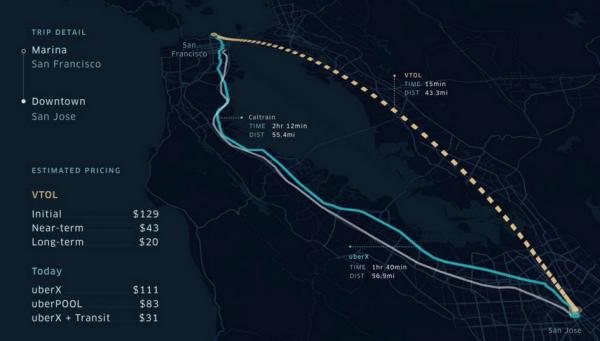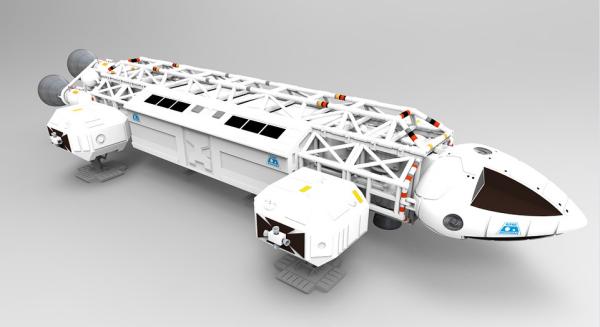Our self-flying car future? Not so flying
Self-flying cars can fly very fast… until they meet two obstacles: transport optimization and… other self-flying cars.
Yesterday, just a few hours after announcing my doubts about self-flying cars, I saw for the first time the TechCrunch piece about “Our self-flying car future”. I think that article is right on two points:
- (obvious) a big advantage of flying is that it almost always lets you go for the shortest route
- (less obvious, more important): if we are to build self-flying “cars” we should use drones, not existing cars or planes, as base models and technology
This said, that piece does not really change much my initial position about self-flying cars, except in some cases.
There are basically two reasons for this. The first is that we are now at a point in human history when private cars as a “PERSONAL transportation” mass phenomenon have to disappear anyway, for environmental reasons if nothing else.
The other issue, which may be even more blocking, is in statements like these (from the TechCrunch piece):
“Just take off near home, and land next to your destination. Again, less infrastructure required, more time saved”
which are illustrated with charts like this:

San Josè to San Francisco in self-flying cars? 15 MINUTES. Sure. No problem
</em></u>
Charts and statements like those are just too incomplete, in practically all urban centers I’ve seen in my life, personally or on TV. The reason is very simple, and well visible in this picture:

Behold this commuter quickly landing, with her personal self-flying car, in a TYPICAL CITY CENTER
</em></u>
When is the last time you saw a real commuting ending like that, without any other cars or humans competing for space and right of way? Flying commuting would be even worse because, as already said, it will need much heavier regulation than “normal” driving.
All you will get if you really give ten thousands flying cars to ten thousands daily commuters to San Francisco, Rome or any other city, is ten thousands people getting there in 15 minutes, just to wait 150 minutes flying in circles, until it’s their turn to land. Repeat on the way home. Less infrastructure, more time saved? No way. Not without erasing whole cities first.
Of course, all those self-flying vehicles could be shared like cabs, departing immediately after discharging passengers, without parking. In that scenario, complete commutes would take much less than traveling on the ground, but still quite more than 15 minutes from take off to landing. But this only brings us to the next question: why should those shared flying vehicles be limited to 4/6 seats?
Why shouldn’t those self-flying things be buses?
The real bottlenecks of commuting, flying or not, are in how much time it takes to actually start or finish it (getting to the highway, parking, landing…) and how many other people are separately commuting to the same place.
So why go for very limiting “cars”, instead of turning into heavyweight drones the most realistic (and IMHO coolest) spaceships ever seen on TV, whose detachable central containers could carry either people or cargo:

<u><em><strong>CAPTION:</strong>
<a href="https://en.wikipedia.org/wiki/Space:_1999" target="_blank">If you don't know what this is, you missed a great Sci-Fi series. Click to discover it</a>
</em></u>
Exceptions, and the real “take home” lesson
Self-flying, drone-derived small vehicles as in the “landing” picture above still make a lot of sense, in my opinion, in at least two cases, both very different from mass commuting:
- special vehicles, that is ambulances, law enforcement, firefighters (and yes, possibly even cabs, somewhere)…
- personal/family transportation in rural, rugged areas, where terrain and low population density may indeed make small flying vehicles and “less infrastructure” much more sensible than in urban centres, or for urban commuting (but I’d still push for hovercraft 2.0, and shared ownership, in many of those cases)
The take home lesson? Don’t distract yourself too much with self driving, self flying, or engine types. The real and first battle, game changer, innovation, choice or whatever you call it, is the one between shared and individual ownership (=burden) of vehicles. The rest is just technology.
Who writes this, why, and how to help
I am Marco Fioretti, tech writer and aspiring polymath doing human-digital research and popularization.
I do it because YOUR civil rights and the quality of YOUR life depend every year more on how software is used AROUND you.
To this end, I have already shared more than a million words on this blog, without any paywall or user tracking, and am sharing the next million through a newsletter, also without any paywall.
The more direct support I get, the more I can continue to inform for free parents, teachers, decision makers, and everybody else who should know more stuff like this. You can support me with paid subscriptions to my newsletter, donations via PayPal (mfioretti@nexaima.net) or LiberaPay, or in any of the other ways listed here.THANKS for your support!